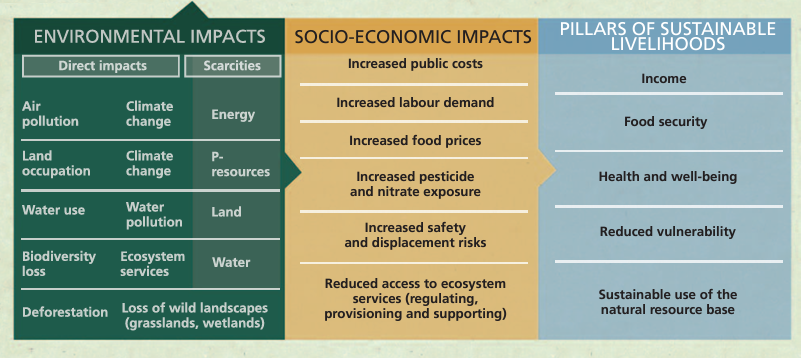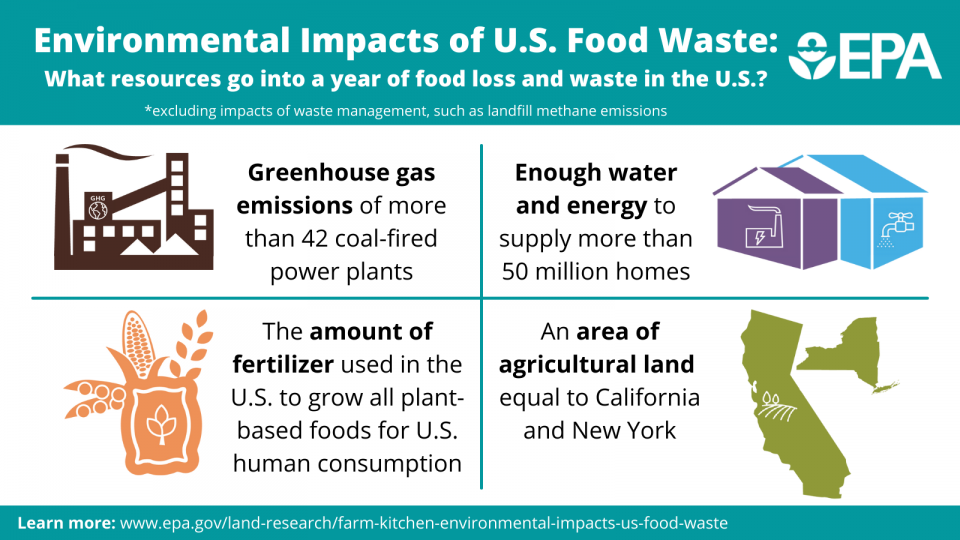Globally, about one-third of all of the food that’s produced for human consumption is wasted. The cost of this waste is about $1 trillion (USD) each year. To put a trillion dollars in perspective, consider that only 19 of the world’s 195 countries have a gross domestic product (GDP) that large.
Now think about your own household. In the United States, the average family of four wastes food worth nearly $2,200 a year. Produce accounts for $1,600 of this amount, but dairy products are the food items that are discarded the most. Amazingly, Americans also throw out 26% of the meat they buy – and hamburger and steak isn’t getting cheaper.
So, what’s the cost of all this wasted milk, meat, and more? Ultimately, a dollar amount alone doesn’t tell the whole story. That’s because the consequences of food waste involve more than just financial costs.

Let’s take a look at some of the costs and consequences of food waste.
Economic Costs
When food is wasted, the resources used in its production are also wasted. This represents an economic loss throughout the supply chain – from farmers and food processors to truckers, retailers, and consumers.
Consider a few facts about the U.S. economy.
- The food system uses 10% of all of the energy that’s consumed. If Americans waste between 25% and 50% of their food, then 2.5% to 5% of total U.S. energy consumption is embedded in this waste.
- A year’s worth of food waste requires enough fertilizer to grow all of the plant-based food in the U.S. That’s after fertilizer prices nearly doubled between the summer of 2020 and the end of 2021. Today, fertilizer prices remain relatively high.
- The amount of food wasted in the U.S. has an approximate value of nearly $218 billion. That’s the equivalent of 130 billion meals, and at a time when one in eight U.S. households is either experiencing food insecurity or lacking access to an affordable, nutritious diet.
- The average U.S. grocer discards between $5,000 and $10,000 of food a week. To put that in perspective, 60% of grocery workers make about $20,000 per year.
- Disposing of food waste in landfills or through other means incurs additional costs for waste management. Today, food is the single largest component taking up space inside U.S. landfills, making up 22% of municipal solid waste (MSW).
There are also environmental costs and consequences to consider.
Environmental Costs
Food waste consumes valuable natural resources such as land and water. Plus, it contributes to environmental degradation through the use of pesticides and chemical fertilizers. In addition, because the amount of U.S. food waste is so substantial, its greenhouse gas emissions (GHG) are not insignificant.
- Water: About 21% of the water that’s used to grow America’s food is wasted. That’s enough to supply 50 million homes.
- Land: The amount of food wasted each year requires an area of agricultural land equal to California and New York for cultivation.
- Greenhouse Gas Emissions: Decomposing food waste in landfills produces methane, a greenhouse gas. The U.S. Environmental Protection Agency (EPA) reports that food waste’s GHG emissions are more than 42 coal-fired power plants.
Who Profits?
If the costs of food waste are so considerable, why aren’t businesses working on ways to reduce, reuse, and recycle? They are. The next few articles in this series will take a look at some promising technological solutions.
